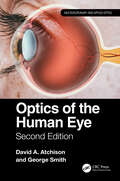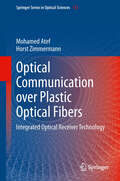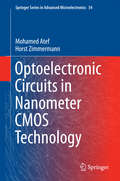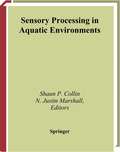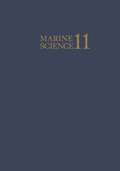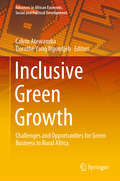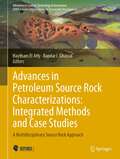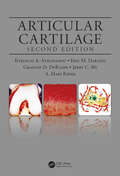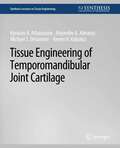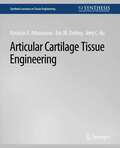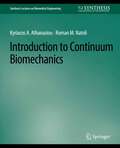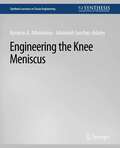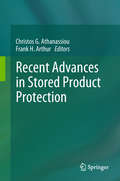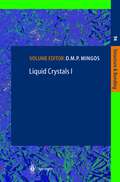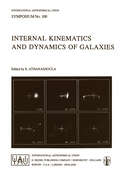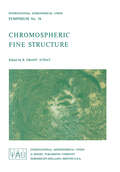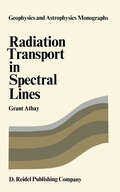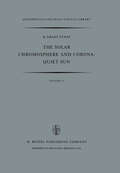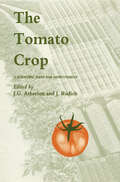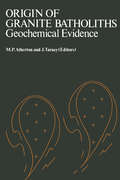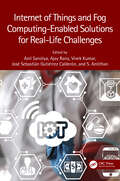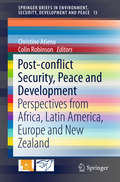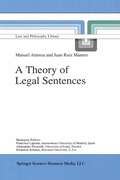- Table View
- List View
Optics of the Human Eye (Multidisciplinary and Applied Optics)
by David A. AtchisonThis book describes the optical structure and optical properties of the human eye. For ease of reference, the most commonly useful topics are at the beginning and topics with narrower appeal are placed towards the end. The book is divided into five sections, covering: Basic optical structure of the eye, including the refracting components, the pupil, axes, and simple models of the eye Image formation and refraction of the eye, including refractive errors, measurement, and correction Interactions between light and the eye, considering transmission, reflection, and scatter in the media and at the fundus Aberrations and retinal image quality Depth-of-field and age-related changes in the optics of the eye There have been many developments in the field of visual optics since the first edition was published in 2000. There have been advances in instrumentation for imagery, biometry, and aberrations of the eye. The refraction anomaly of myopia has increased in prevalence throughout the world, and is getting increasing attention because of its association with ocular pathology in the middle and later years of life. Ocular aberrations are now considered in terms of Zernike polynomials rather than Taylor polynomials. Aberrations can be manipulated to better understand their effects on visual performance to improve imagery of the retina for the betterment of diagnosis of various ocular conditions, and to treat the progression of myopia in children. To deal with these developments, the section on aberrations and retinal image quality has undergone considerable revision. This book will be an invaluable purchase for all those with an interest in vision, such as optometrists, ophthalmologists, vision scientists, optical physics, and student of visual optics. An understanding of the optics of the human eye is particular important to designers of ophthalmic diagnostic equipment and visual optical systems such as telescopes.
Optics of the Human Eye (Multidisciplinary and Applied Optics)
by David A. AtchisonThis book describes the optical structure and optical properties of the human eye. For ease of reference, the most commonly useful topics are at the beginning and topics with narrower appeal are placed towards the end. The book is divided into five sections, covering: Basic optical structure of the eye, including the refracting components, the pupil, axes, and simple models of the eye Image formation and refraction of the eye, including refractive errors, measurement, and correction Interactions between light and the eye, considering transmission, reflection, and scatter in the media and at the fundus Aberrations and retinal image quality Depth-of-field and age-related changes in the optics of the eye There have been many developments in the field of visual optics since the first edition was published in 2000. There have been advances in instrumentation for imagery, biometry, and aberrations of the eye. The refraction anomaly of myopia has increased in prevalence throughout the world, and is getting increasing attention because of its association with ocular pathology in the middle and later years of life. Ocular aberrations are now considered in terms of Zernike polynomials rather than Taylor polynomials. Aberrations can be manipulated to better understand their effects on visual performance to improve imagery of the retina for the betterment of diagnosis of various ocular conditions, and to treat the progression of myopia in children. To deal with these developments, the section on aberrations and retinal image quality has undergone considerable revision. This book will be an invaluable purchase for all those with an interest in vision, such as optometrists, ophthalmologists, vision scientists, optical physics, and student of visual optics. An understanding of the optics of the human eye is particular important to designers of ophthalmic diagnostic equipment and visual optical systems such as telescopes.
Optical Communication over Plastic Optical Fibers: Integrated Optical Receiver Technology (Springer Series in Optical Sciences #172)
by Mohamed Atef Horst ZimmermannThis book presents high-performance data transmission over plastic optical fibers (POF) using integrated optical receivers having good properties with multilevel modulation, i.e. a higher sensitivity and higher data rate transmission over a longer plastic optical fiber length. Integrated optical receivers and transmitters with high linearity are introduced for multilevel communication. For binary high-data rate transmission over plastic optical fibers, an innovative receiver containing an equalizer is described leading also to a high performance of a plastic optical fiber link. The cheap standard PMMA SI-POF (step-index plastic optical fiber) has the lowest bandwidth and the highest attenuation among multimode fibers. This small bandwidth limits the maximum data rate which can be transmitted through plastic optical fibers. To overcome the problem of the plastic optical fibers high transmission loss, very sensitive receivers must be used to increase the transmitted length over POF. The plastic optical fiber limited bandwidth problem can be decreased by using multilevel signaling like multilevel pulse amplitude modulation or by using an equalizer for binary data transmission.
Optoelectronic Circuits in Nanometer CMOS Technology (Springer Series in Advanced Microelectronics #55)
by Mohamed Atef Horst ZimmermannThis book describes the newest implementations of integrated photodiodes fabricated in nanometer standard CMOS technologies. It also includes the required fundamentals, the state-of-the-art, and the design of high-performance laser drivers, transimpedance amplifiers, equalizers, and limiting amplifiers fabricated in nanometer CMOS technologies. This book shows the newest results for the performance of integrated optical receivers, laser drivers, modulator drivers and optical sensors in nanometer standard CMOS technologies. Nanometer CMOS technologies rapidly advanced, enabling the implementation of integrated optical receivers for high data rates of several Giga-bits per second and of high-pixel count optical imagers and sensors. In particular, low cost silicon CMOS optoelectronic integrated circuits became very attractive because they can be extensively applied to short-distance optical communications, such as local area network, chip-to-chip and board-to-board interconnects as well as to imaging and medical sensors.
Sensory Processing in Aquatic Environments
by J. Atema N. Justin Marshall R. R. Fay A. N. Popper W. N. Tavolga Shaun P. Collin T. BullockResearch on sensory processing or the way animals see, hear, smell, taste, feel and electrically and magnetically sense their environment has advanced a great deal over the last fifteen years. This book discusses the most important themes that have emerged from recent research and provides a summary of likely future directions. The book starts with two sections on the detection of sensory signals over long and short ranges by aquatic animals, covering the topics of navigation, communication, and finding food and other localized sources. The next section, the co-evolution of signal and sense, deals with how animals decide whether the source is prey, predator or mate by utilizing receptors that have evolved to take full advantage of the acoustical properties of the signal. Organisms living in the deep-sea environment have also received a lot of recent attention, so the next section deals with visual adaptations to limited light environments where sunlight is replaced by bioluminescence and the visual system has undergone changes to optimize light capture and sensitivity. The last section on central co-ordination of sensory systems covers how signals are processed and filtered for use by the animal. This book will be essential reading for all researchers and graduate students interested in sensory systems.
Estuarine and Wetland Processes: With Emphasis on Modeling (Marine Science #11)
by Keith B. Ater P. MacdonaldEstuaries and Wetlands are important coastal resources which are subject to a great deal of environmental stress. Dredging, construction, creation of intertidal wetlands, regulation of fresh water flow, and pollution are just a few of the activities which affect these coastal systems. The need to predict the effects of these perturbations upon ecosystem dynamics, particularly estuarine fisheries, as well as on physical effects, such as sedimentation and salt intrusion, is of paramount importance. Prediction requires the use of models, but no model is likely to be satisfactory unless fundamental physical, chemical, sedimentological, and biological processes are quantitatively understood, and the appropriate time and space scales known. With these considerations in mind, the Environmental Laboratory, U. S. Army Engineer Haterways Experiment Station,* Vicksburg, Mississippi, sponsored a workshop on "Estuarine and Wetland Processes and Water Quality Modeling" held in New Orleans, June 1979. The contents of this volume have been selected from the workshop papers. The resulting book, perhaps more than any other symposium proceed ings on estuaries and wetlands, attempts to review important pro cesses and place them in a modeling context. There is also a distinct applied tinge to a number of the contributions since some of the research studies were motivated by environmental assessments. The difference in title between this volume and the workshop re flects more accurately the contents of the published papers.
Inclusive Green Growth: Challenges and Opportunities for Green Business in Rural Africa (Advances in African Economic, Social and Political Development)
by Calvin Atewamba Dorothé Yong NgondjebFostering inclusive green growth in Africa means addressing existing and emerging development challenges, while efficiently managing Africa’s natural capital and building resilience to environmental, social and economic risks. Although this new paradigm for development has the potential to create tremendous business opportunities, there are also challenges. This book provides empirical evidence on the conditions for the emergence of green businesses in Africa. It includes 13 case studies, which identify the determinants of small and medium-size enterprises’ engagement in inclusive and sustainable growth in rural Africa, and the factors that hinder eco-innovation in business and entrepreneurial activities. Furthermore it discusses appropriate regulations and policies to stimulate the development of green business in Africa. Offering insights into the relationship between eco-innovation, labor productivity and business competitiveness in rural Africa, this book appeals to scholars, policy makers and practitioners interested in a green economy for Africa.
Advances in Petroleum Source Rock Characterizations: A Multidisciplinary Source Rock Approach (Advances in Science, Technology & Innovation)
by Haytham El Atfy Bandar I. GhassalThis book is directed to those who are interested in petroleum geology, especially source rock from both academia and industrial societies. Our chapter-based book is written by a list of world-class subject-matter experts.The book includes recent advancements in analytical source rock characterization methods with some case studies. It is also used as part of a course curriculum or guide for source rock interpretation for all researcher categories.Significant improvement in the source rock characterization techniques in the last two decades and the knowledge is disseminated in a huge amount of papers and studies. The book intends to collect these recent advancements in one textbook to benefit students and researchers in general. In addition, it is supplemented by many case studies from all over the world that represent important data sets for the regional geology of these areas.
Articular Cartilage
by Kyriacos A. Athanasiou Eric M. Darling Jerry C. Hu Grayson D. DuRaine A. Hari ReddiThis book covers the latest research and advancements related to articular cartilage in biology, development, pathology, clinical applications and tissue engineering. The authors take an interdisciplinary approach that encompasses the breadth and depth of basic science, bioengineering, translational science and detailed methological approaches. It is designed to be an all encompassing encyclopedia of articular cartilage. Written at a level that allows wide accessibility, the book’s comprehensive focus on multiple aspects of articular cartilage sets it apart from other books.
Articular Cartilage (Synthesis Lectures On Tissue Engineering Ser.)
by Kyriacos A. Athanasiou Eric M. Darling Jerry C. Hu Grayson D. DuRaine A. Hari ReddiThis book covers the latest research and advancements related to articular cartilage in biology, development, pathology, clinical applications and tissue engineering. The authors take an interdisciplinary approach that encompasses the breadth and depth of basic science, bioengineering, translational science and detailed methological approaches. It is designed to be an all encompassing encyclopedia of articular cartilage. Written at a level that allows wide accessibility, the book’s comprehensive focus on multiple aspects of articular cartilage sets it apart from other books.
Tissue Engineering of Temporomandibular Joint Cartilage (Synthesis Lectures on Tissue Engineering)
by Kyriacos Athanasiou Alejandro J. Almarza Michael S. Detamore Kerem N. KalpakciThe temporomandibular joint (TMJ) is a site of intense morbidity for millions of people, especially young, pre-menopausal women. Central to TMJ afflictions are the cartilaginous tissues of the TMJ, especially those of the disc and condylar cartilage, which play crucial roles in normal function of this unusual joint. Damage or disease to these tissues significantly impacts a patient's quality of life by making common activities such as talking and eating difficult and painful. Unfortunately, these tissues have limited ability to heal, necessitating the development of treatments for repair or replacement. The burgeoning field of tissue engineering holds promise that replacement tissues can be constructed in the laboratory to recapitulate the functional requirements of native tissues. This book outlines the biomechanical, biochemical, and anatomical characteristics of the disc and condylar cartilage, and also provides a historical perspective of past and current TMJ treatments and previous tissue engineering efforts. This book was written to serve as a reference for researchers seeking to learn about the TMJ, for undergraduate and graduate level courses, and as a compendium of TMJ tissue engineering design criteria. Table of Contents: The Temporomandibular Joint / Fibrocartilage of the TMJ Disc / Cartilage of the Mandibular Condyle / Tissue Engineering of the Disc / Tissue Engineering of the Mandibular Condyle / Current Perspectives
Articular Cartilage Tissue Engineering (Synthesis Lectures on Tissue Engineering)
by Kyriacos Athanasiou Eric M. Darling Jerry C. HuCartilage injuries in children and adolescents are increasingly observed, with roughly 20% of knee injuries in adolescents requiring surgery. In the US alone, costs of osteoarthritis (OA) are in excess of $65 billion per year (both medical costs and lost wages). Comorbidities are common with OA and are also costly to manage. Articular cartilage's low friction and high capacity to bear load makes it critical in the movement of one bone against another, and its lack of a sustained natural healing response has necessitated a plethora of therapies. Tissue engineering is an emerging technology at the threshold of translation to clinical use. Replacement cartilage can be constructed in the laboratory to recapitulate the functional requirements of native tissues. This book outlines the biomechanical and biochemical characteristics of articular cartilage in both normal and pathological states, through development and aging. It also provides a historical perspective of past and current cartilage treatments and previous tissue engineering efforts. Methods and standards for evaluating the function of engineered tissues are discussed, and current cartilage products are presented with an analysis on the United States Food and Drug Administration regulatory pathways that products must follow to market. This book was written to serve as a reference for researchers seeking to learn about articular cartilage, for undergraduate and graduate level courses, and as a compendium of articular cartilage tissue engineering design criteria. Table of Contents: Hyaline Articular Cartilage / Cartilage Aging and Pathology / In Vitro / Bioreactors / Future Directions
Introduction to Continuum Biomechanics (Synthesis Lectures on Biomedical Engineering)
by Kyriacos Athanasiou Roman NatoliThis book is concerned with the study of continuum mechanics applied to biological systems, i.e., continuum biomechanics. This vast and exciting subject allows description of when a bone may fracture due to excessive loading, how blood behaves as both a solid and fluid, down to how cells respond to mechanical forces that lead to changes in their behavior, a process known as mechanotransduction. We have written for senior undergraduate students and first year graduate students in mechanical or biomedical engineering, but individuals working at biotechnology companies that deal in biomaterials or biomechanics should also find the information presented relevant and easily accessible. Table of Contents: Tensor Calculus / Kinematics of a Continuum / Stress / Elasticity / Fluids / Blood and Circulation / Viscoelasticity / Poroelasticity and Thermoelasticity / Biphasic Theory
Engineering the Knee Meniscus (Synthesis Lectures on Tissue Engineering)
by Kyriacos Athanasiou Johannah Sanchez-AdamsThe knee meniscus was once thought to be a vestigial tissue, but is now known to be instrumental in imparting stability, shock absorption, load transmission, and stress distribution within the knee joint. Unfortunately, most damage to the meniscus cannot be effectively healed by the body. Meniscus tissue engineering offers a possible solution to this problem by striving to create replacement tissue that may be implanted into a defect site. With a strong focus on structure-function relationships, this book details the essential anatomical, biochemical, and mechanical aspects of this versatile tissue and reviews current meniscus tissue engineering strategies and repair techniques. We have written this text such that undergraduate students, graduate students, and researchers will find it useful as a first foray into tissue engineering, a cohesive study of the meniscus, or a reference for meniscus engineering specifications. Table of Contents: Structure-Function Relationships of the Knee Meniscus / Pathophysiology and the Need for Tissue Engineering / Tissue Engineering of the Knee Meniscus / Current Therapies and Future Directions
Recent Advances in Stored Product Protection
by Christos G. Athanassiou Frank H. ArthurThis book aims to assess, evaluate and critically analyze the methods that are currently available for a judicious pest management in durable food. It presents and analyzes a vast amount of methods that are already in use in “real world” industrial applications. After the phase-out of methyl bromide, but also the withdrawal of several insecticides and the continuously updated food safety regulations, there is a significant knowledge gap on the use of risk-reduced, ecologically-compatible control methods that can be used with success against stored-product insect species and related arthropods. The importance of integrated pest management (IPM) is growing, but the concept as practiced for stored products might differ from IPM as historically developed for field crops. This book discusses a wide variety of control strategies used for stored product management and describes some of the IPM components. The editors included chemical and non-chemical methods, as both are essential in IPM. They set the scene for more information regarding emerging issues in stored product protection, such as emerging, alien and invasive species as threats for global food security, as well as the importance of stored-product arthropods for human health. Finally, the analysis of the economics of stored product protection is presented, from theory to practice.
Liquid Crystals I (Structure and Bonding #94)
by M. A. Athanassopoulou M. A. Bates S. J. Clark J. Crain W. Haase G. R. Luckhurst B. I. Ostrovskii M. R. WilsonThe liquid crystalline state may be identified as a distinct and unique state of matter which is characterised by properties which resemble those of both solids and liquids. It was first recognised in the middle of the last century through the study of nerve myelin and derivatives of cholesterol. The research in the area really gathered momentum, however, when as a result of the pioneering work of Gray in the early 1970's organic compounds exhibiting liquid crystalline properties were shown to be suitable to form the basis of display devices in the electronic products. The study of liquid crystals is truly multidisciplinary and has attached the attention of physicists, biologists, chemists, mathematicians and electronics engineers. It is therefore impossible to cover all these aspects fully in two small volumes and therefore it was decided in view of the overall title of the series to concentrate on the structural and bonding aspects of the subject. The Chapters presented in these two volumes have been organised to cover the following fundamental aspects of the subiect. The calculation of the structures of liquid crystals, an account of their dynamical properties and a discussion of computer simulations of liquid crystalline phases formed by Gay Berne mesogens. The relationships between molecular conformation and packing are analysed in some detail. The crystal structures of liquid crystal mesogens and the importance of their X ray scattering properties for characterisational purposes are discussed.
Internal Kinematics and Dynamics of Galaxies (International Astronomical Union Symposia #100)
by E. AthanassoulaProceedings of IAU Symposium No. 100, held in Besançon, France, August 9-13, 1982
Chromospheric Fine Structure (International Astronomical Union Symposia #56)
by R. G. AthayThe devotion of an IA U symposium entirely to the topic of chromo spheric fine structure at a time when models of the spherically symmetric chromosphere are still evolving constitutes a valid recognition of the growing feeling among solar astron omers that the chromosphere cannot be understood independently of its discrete structural features. Network structure, which seemingly borders the photospheric supergranule cells, persists intact throughout the chromosphere and most of the chromosphere-corona transition region. The network is the locus of the bright coarse mottles, and the spicule bushes and is the terminus for one end of the quiet chromo spheric fibrils as well. Additionally, it is the locus of most of the magnetic flux of the quiet chromosphere. It is not surprising, therefore, that current studies of the chromosphere tend to center around efforts to better describe the network phenom ena and to ascertain the physical properties of the network features. Clearly, the supergranule cells and associated network structures constitute a fundamental and singularly important feature of solar structure in the boundary layers. Just as it is now clear that much of the chromo spheric fine structure is associated with the network bordering supergranule cells, it seems equally clear that structural features are almost universally associated with both fluid flow and magnetic geometry. Indeed, many observers claim that the brightness features faithfully map the mag netic lines offorce while still others claim that associated with each class of brightness feature there is a more or less unique fluid flow.
Radiation Transport in Spectral Lines (Geophysics and Astrophysics Monographs #1)
by R.G. AthayThe usual book on the theory of spectral line formation begins with an in-depth dis cussion of radiation transfer, including the elegant methods of obtaining analytical solutions for special cases, and of the physics of line broadening. Neither of those features will be found in this book. It is assumed that the reader is already familiar with the essentials of transport theory and of line broadening and is ready to investi gate some of the particular applications of the theory to the flow of line photons through the outer layers of a star, or other tenuous media. The main thrust of this book is toward the compilation and presentation of a vast quantity of computational material available to the author in the form of computer output. The material presented represents a highly filtered sample of the published work in this subject plus an extensive set of previously unpublished results. To present large quantities of computer output in an intelligible and efficient way is a difficult task, for which I have found no really satisfactory solution. Chapters III and IV, in particular, contain almost exclusively this type of presentation. The reader may find these chapters somewhat tedious because of the level of condensation of the material. I have tried to reach a reasonable balance between over condensation and excessive detail, which in the long run may be irrelevant.
The Solar Chromosphere and Corona: Quiet Sun (Astrophysics and Space Science Library #53)
by R.G. AthayThe widespread tendency in solar physics to divide the solar atmosphere into separate layers and to distinguish phenomena of solar activity from phenomena of the quiet Sun emphasizes the wide ranging diversity of physical conditions and events occurring in the solar atmosphere. This diversity spans the range from a neutral, essentially quiescent atmosphere to a highly ionized, violently convective atmosphere; from a domain in which magnetic field effects are unimportant to a domain in which the magnetic pressure exceeds the gas pressure, and from a domain in which the particle motions are Maxwellian to a domain in which an appreciable fraction of the particles is accelerated to relativistic energies. It is now widely recognized that the chromosphere and corona have a common origin in the mechanical energy flux generated in the hydrogen convection zone lying beneath the photosphere. Furthermore, magnetic field phenomena appear to be as vital to the structure of th~ quiet Sun as to the active Sun. For these reasons it appears desirable to present a unified treatment of the entire solar atmosphere, both active and quiet, in a single volume. On the other hand, such a treatise must be very long if it is to avoid being superficial, and it is very difficult for a single author to write authoritatively on such a wide range of topics.
The Tomato Crop: A scientific basis for improvement (World Crop Series)
by J. Atherton J. RudichThe tomato is commercially important throughout the world both for the fresh fruit market and the processed food industries. It is grown in a wide range of climates in the field, under protection in plastic greenhouses and in heated glasshouses. Genetic, physiological and pathological investigations frequently adopt the tomato plant as a convenient subject. Hitherto, much of the information on tomatoes has been fragmented: tomatoes grown in the field and under protection have been considered separately and the more fundamental findings from research have often failed to reach those involved directly or indirectly in commercial crop production. Similarly, the research scientist is often unaware of the problems of commercial crop production and the possible relevance of his work to the crop. This book is an attempt to rectify that situation. By giving a thorough scientific review of all factors influencing tomato production systems, it is hoped that this book will prove useful to students, researchers and commercial producers alike. It gives the basis for the develop ment of improved cultivars, the formulation of strategies for managing pest, disease and disorder problems and the production of high yields of good quality fruit as well as suggesting important areas for scientific initiatives. The extensive bibliographies provide a comprehensive database for tomato researchers. Such a vast subject could not be covered with authority by anyone author.
Origin of Granite Batholiths Geochemical Evidence: Based on a meeting of the Geochemistry Group of the Mineralogical Society
by ATHERTON TARNEY(EDS)This book is for undergraduates, postgraduates and research workers who wish to gain an insight into present ideas and speculations on the origin of granite batholiths. It is a summary of the proceedings of a one-day meeting of the Geochemistry Group of the Mineralogical Society held at the University of liverpool on the 2nd May 1979, entitled The Origin of Granite Batholiths: Geochemical Evidence. It was felt that relevant new geochemical and isotopic data with associated field and petrological observations would be helpful in clarifying the main issues connected with the origin of granitic rocks. The speakers who participated contri buted a wealth of data and ideas to the problem, based on many years' experience of granitic rocks in various parts of the world. The popularity of the meeting indicated that a summary of the talks might be welcomed by a wider audience; hence this book. For reasons of length and cost, authors have been limited to presenting only the essential results necessary to develop their arguments and ideas. The comprehensive reference list will, however, assist those who wish to pursue specific aspects in greater detail. Inevitably, the cost and speed of publication may have resulted in some errors and inconsistencies which would not have occurred in a book produced over a longer time-span, but the editors hope that the rapid and up-to-date publication will offset this. The controversy over the origin of granite is as old as the science of geology.
Internet of Things and Fog Computing-Enabled Solutions for Real-Life Challenges
by Senthil Athithan Anil Saroliya Ajay Rana Vivek Kumar José Sebastián Gutiérrez CalderónIn today’s world, the use of technology is growing rapidly, and people need effective solutions for their real-life problems. This book discusses smart applications of associated technologies to develop cohesive and comprehensive solutions for the betterment of humankind. It comprehensively covers the effective use of the Internet of Things (IoT), wireless sensor network, wearable sensors, body area network, cloud computing, and distributed computing methodologies. The book comprehensively covers IoT and fog computing sensor supported technologies or protocols including web of things, near-field communication, 6LoWPAN, LoRAWAN, XMPP, DDS, LwM2M, Mesh Protocol, and radio-frequency identification. The book- Discusses smart applications to develop cohesive and comprehensive solutions for real-life problems. Covers analytical descriptions with appropriate simulation and prototype models. Examines the role of IoT and fog computing technologies during global emergency situations. Discusses key technologies including cloud computing, 5G communication, big data, artificial intelligence, control systems, and wearable sensors. The text is primarily written for graduate students, and academic researchers working in diverse fields of electrical engineering, biomedical engineering, electronics and communication engineering, computer engineering, and information technology.
Post-conflict Security, Peace and Development: Perspectives From Africa, Latin America, Europe And New Zealand (Springerbriefs In Environment, Security, Development And Peace Ser. #13)
by Christine Atieno Colin RobinsonThis book examines links between post-conflict security, peace and development in Africa, Latin America, Europe and New Zealand. Young peace researchers from the Global South (Uganda, Ivory Coast, Kenya, Brazil, Colombia) as well as from Italy and New Zealand address in case studies traumas in Northern Uganda, demobilisation and reintegration of ex-combatants in the Ivory Coast, economic and financial management of terrorism in Kenya, organised crime in Brazil, mental health issues in Colombia, macro realism in Europe and global defence reforms within the military apparatus since 1990. The book reviews linkages between regional stability, development and peace in post-conflict societies while adding on to the post 2015 international agenda and discusses linkages between peace, security and development.
A Theory of Legal Sentences (Law and Philosophy Library #34)
by Manuel Atienza J. Ruiz ManeroLegal statements are, according to the authors, the most basic elements of the law. Nevertheless they must be considered not only as the pieces of a puzzle, but also as the components of a dynamic and highly complex reality: the law of contemporary society. The book presents an analysis of the different types of legal statements (mandatory rules, principles, power-conferring rules, definitions, permissions, values and the rule of recognition) from a threeefold perspective, that is, considering their logical structure, their function in legal reasoning as reasons for action, and their connections with the interests and power relationships among the individuals and the social groups. The result is conceived as a first step in the building of a general theory of law designed not as an isolated discourse but as a decisive element for the dynamization of the legal culture.
